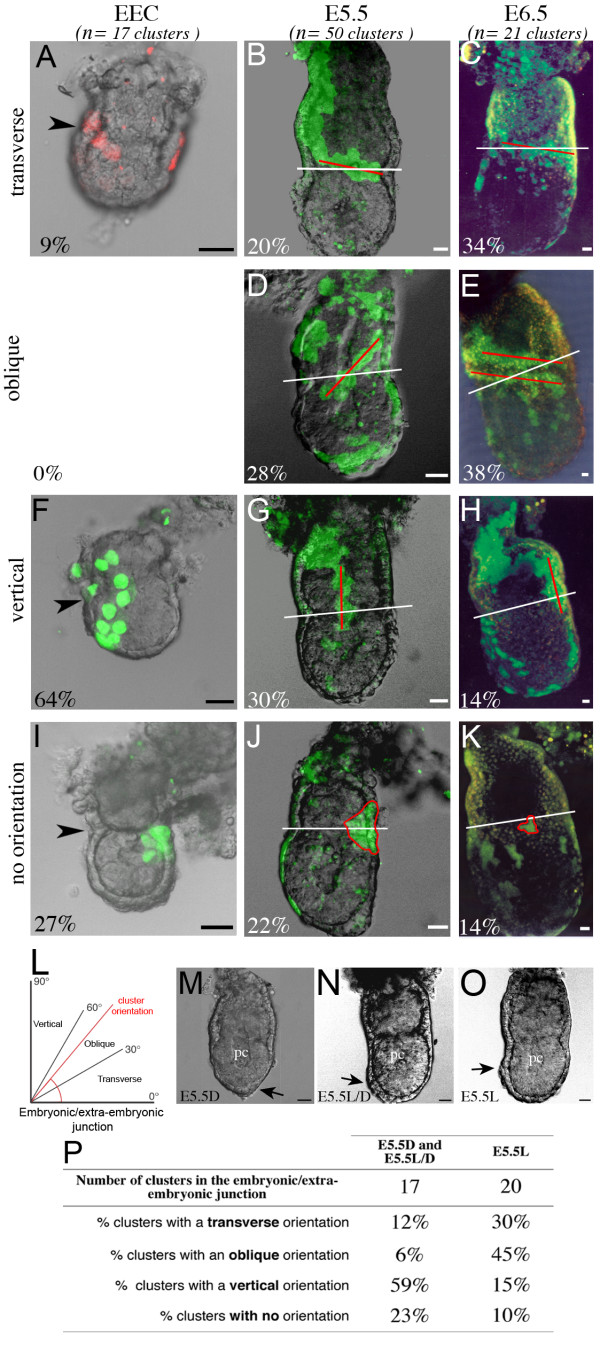Figure 3.
Shift in orientation of VE clusters at the embryonic/extra-embryonic junction. (A-K) Examples, shown as a fluorescent projection of a confocal z series merged with a transmitted light section, of VE clusters with a transverse orientation (A-C), oblique orientation (D-E), vertical orientation (F-H) and with no specific orientation (I-K) at the level of the embryonic/extra-embryonic junction at the early egg cylinder (EEC) stage (A, F, I), E5.5 (B, D, G, J) and E6.5 (C, E, H, K). The orientation of clusters at E5.5 and E6.5 is indicated by a red line and that of the embryonic/extra-embryonic junction by a white line. Arrowheads indicate the embryonic/extra-embryonic junction at the early egg cylinder stage. The contour of clusters with no specific orientation is outlined by a red line. For each stage, the number of clusters considered (n) and the percentage of clusters with a given orientation are shown. The number of conceptuses with clusters of labelled cells at the embryonic/extra-embryonic junction considered is 17 at the early egg cylinder stage, 36 at E5.5 and 21 at E6.5. Some conceptuses have several clusters at the embryonic/extra-embryonic junction. (L) Schematic representation of the classification of junction clusters according to the value of the angle between the orientation of the cluster (red line) and that of the embryonic/extra-embryonic junction. (M-O) Bright field images of conceptuses at E5.5. Black arrows show the thickening of the visceral endoderm (VET), which indicates the position of the anterior pole, distally (D), laterodistally (L/D) or laterally (L). (P) Summary table of the orientation of junction clusters at E5.5 according to the position of the VET. Scale bars 20 μm.

